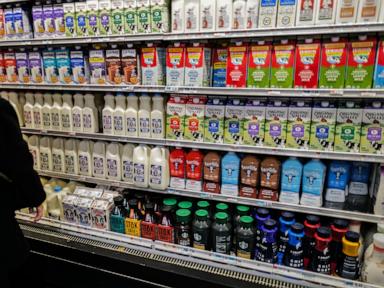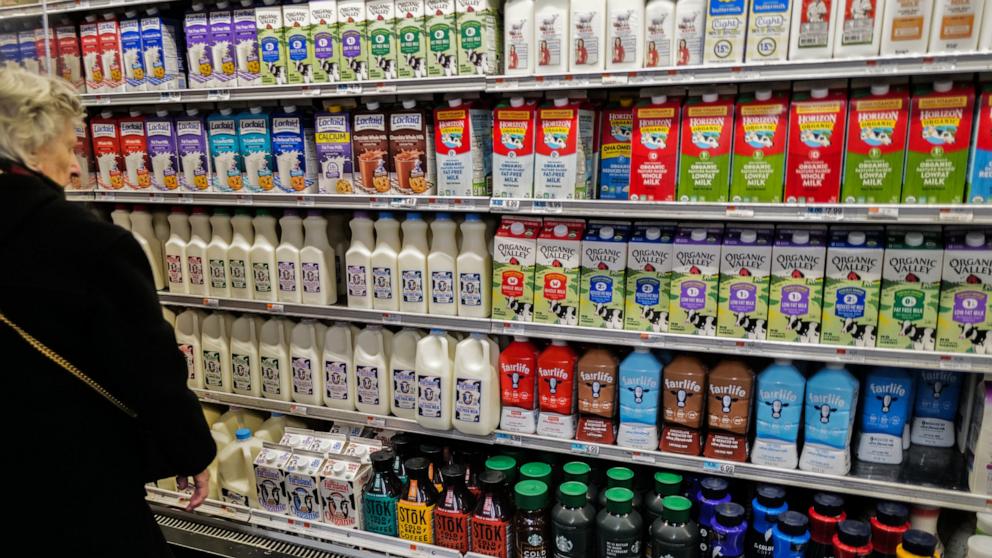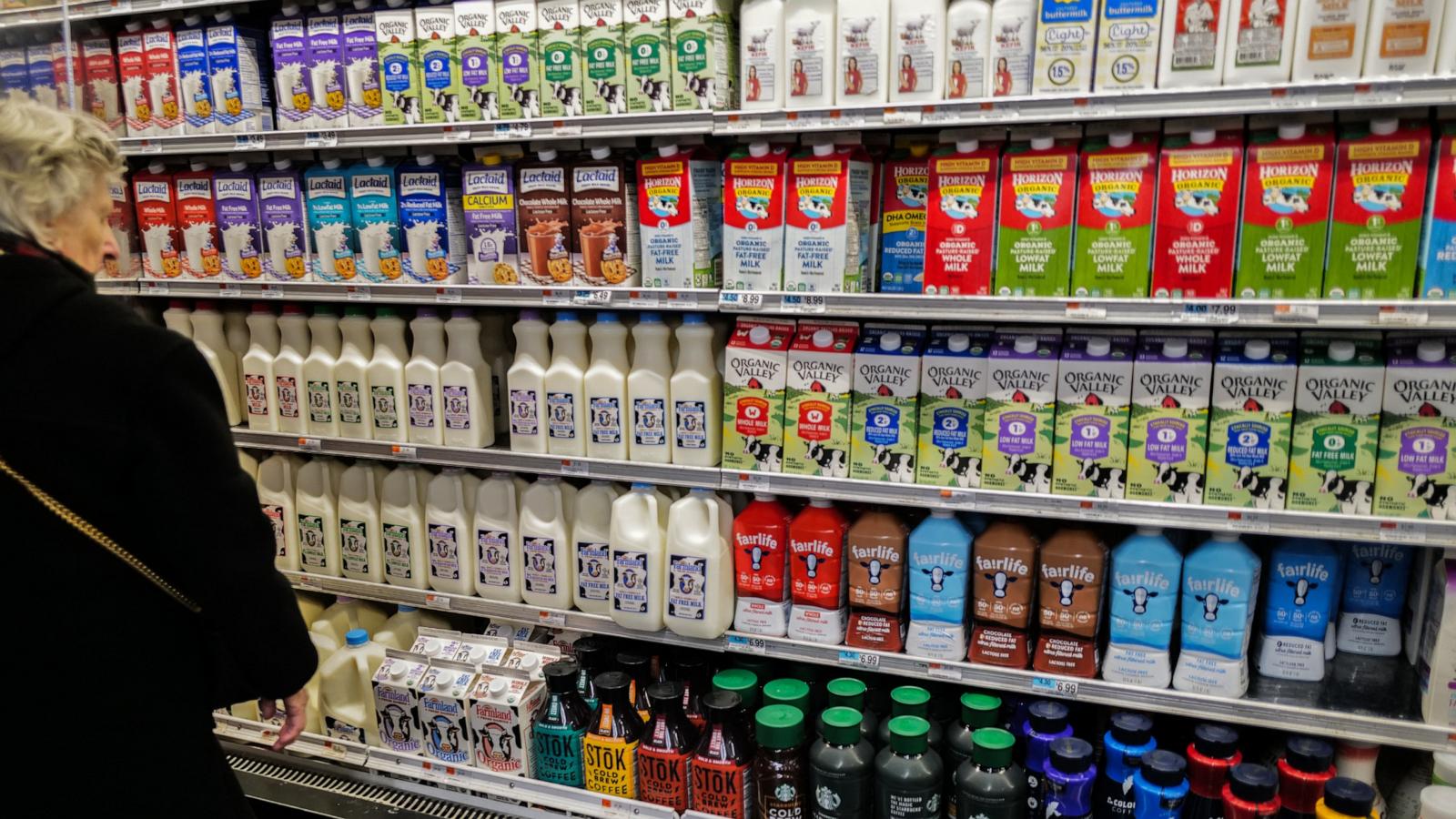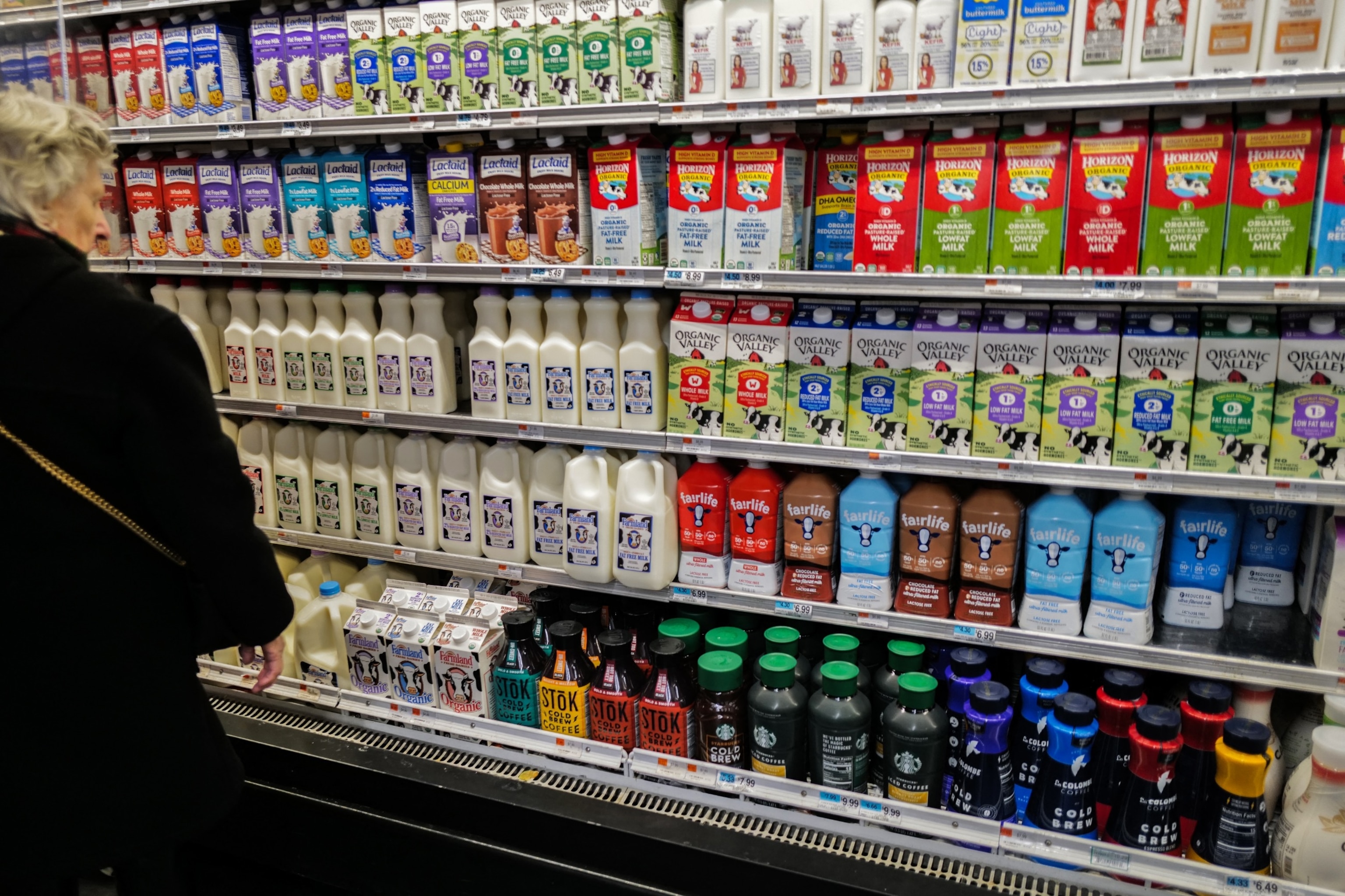






Retail dairy samples recently tested for the avian flu virus, including cottage cheese and sour cream, did not detect any viable virus that would represent a risk to consumers, the U.S. Food and Drug Administration said Wednesday.
In a joint press briefing with the Centers for Disease Control and Prevention and the U.S. Department of Agriculture, Dr. Donald Prater, acting director of the Center for Food Safety and Applied Nutrition for the FDA, shared updates on ongoing bird flu investigations.
A multi-state outbreak of bird flu in dairy cows was first reported in late March, according to the CDC. The agency said at the time it had “confirmed one human HPAI A(H5N1) infection that had exposure to dairy cattle in Texas that were presumed to be infected with the virus,” adding that it was “working with state health departments to continue to monitor workers who may have been in contact with infected or potentially infected birds/animals and test those people who develop symptoms.”
Early last week, initial testing results from the national retail milk study, which sampled 96 pasteurized milk products, showed through PCR testing that about 1 in 5 retail milk samples had tested positive for HPAI viral fragments.
This week, the agencies announced they had not detected “any viable virus” in a second group of test samples.
Second round of dairy product testing negative for bird flu virus, fragments, per FDA

Cows huddle together at a cattle farm in Austin, Texas, April 2, 2024. According to the US Department of Agriculture (USDA), dairy cows at farms in several US states have fallen ill with bird flu.
Adam Davis/EPA/Shutterstock
“Today we’re announcing an additional set of results from our national study of 297 total retail dairy samples. The second group represents an additional 201 samples of pasteurized retail dairy products, including cottage cheese and sour cream in addition to fluid milk,” Prater said. “These samples underwent acute qPCR (quantitative polymerase chain reaction) testing, as well as the same egg inoculation test, and we’re encouraged that this preliminary testing also did not detect any viable virus.”
Related Stories
To further ensure the safety of other milk-derived products for the youngest population, the FDA said it “tested samples of retail powdered infant formula and powdered milk products marketed as toddler formula,” all of which came back negative, “indicating no detection of viral fragments or virus.”
These additional preliminary results “further affirm the safety of the US commercial milk supply” as well as the efficacy of pasteurization in inactivating HPAI, the agency explained.
The FDA is continuing to test samples of pooled raw milk routed to pasteurization and processing for commercial use in order to help characterize potential virus levels that pasteurization may encounter, which will also be used to inform studies to further validate pasteurization.
The FDA, with the CDC, USDA and local health partners, is continuing surveillance of milk production, processing and pasteurization to manage the emerging disease.
The FDA also reiterated this week that it strongly advises against the consumption of raw milk and recommends that the industry not manufacture or sell raw milk or raw milk products.
FSIS beef inspection process amid bird flu in cattle

A woman shops in the dairy section of a supermarket in New York, Jan. 27, 2024.
Charly Triballeau/AFP via Getty Images
“We are very confident that the meat supply is safe,” a representative from the USDA Food Safety and Inspection Service said Wednesday.
The meat inspection process includes each animal being inspected before slaughter, and all cattle carcasses must pass inspection after slaughter before they go into the food supply.
The FSIS has initiated three separate sampling efforts. The first was a collection of retail ground beef from the affected state, the second tested beef muscle samples from dairy cows, also in the affected state, and a third study is being done to test the effectiveness of cooking beef patties to ensure cooking kills the virus.
How the CDC is monitoring H5N1 bird flu, local testing of those exposed
In the course of this investigation with local public health partners, the CDC said Wednesday it has monitored over 100 people, and if anyone presents with symptoms, the next step is to conduct local testing.
The CDC said it is monitoring pre-surveillance data, “especially in areas where H5N1 viruses have been detected in dairy cattle or other animals for any unusual trends in flu-like illness, flu or conjunctivitis,” Dr. Demetre Daskalakis, director of the National Center for Immunization and Respiratory Diseases at the CDC, said in his update Wednesday.
At this time, the CDC said it has found “no indicators of unusual flu activity in people, which includes avian influenza.”
While the number of tests conducted on people locally varies day by day, Daskalakis said “it’s around 25” currently.
People who have been exposed to infected birds, poultry or other animals are monitored for 10 days after exposure.
“We are looking to grow H5N1 virus stock from the one human case in Texas to use for additional laboratory experiments to learn how the virus reproduces in both human and cows,” he said, which will ultimately help the CDC “assess the severity of illness and transmissibility of the virus under different scenarios.”
In addition to laboratory testing, the CDC is continuing with outreach and education through public health partner organizations “to ensure preparedness for any potential human infections or exposures.”
“CDC is conducting broad outreach to the public to raise awareness about the current situation and and remind everyone that the current risk to the general public health is low,” Daskalakis said.
USDA says bird flu outbreak in dairy cows stemmed from single spillover event
“We currently have 36 affected hers across nine states,” said Dr. Rosemary Sifford, deputy administrator of Veterinary Services and Chief Veterinary Officer for the USDA. “It appears that there was a single spillover event in the Texas panhandle geographic region from wild birds and to dairy cattle. The wild birds are believed to be the initial source of the infection in dairy cattle and then cattle movements spread the virus into other dairy cattle herds and then subsequently into poultry flocks.”
Sifford added that of the affected herds, 10% have displayed symptoms, and the “cattle that display symptoms generally returned to near their previous production levels after they recover from the virus, which is taking around two weeks.”
Most cows have recovered with palliative treatment with little or no associated mortality, according to the USDA.
The USDA did not provide a specific number of tests conducted on dairy cattle to date, but Sifford said she expects “an increase in the number of tests.”
“We’re requiring any herds that are moving animals inner state to test up to 30 animals in the lot that they expect to move. Once we reach 30 that’s a statistically significant number to be able to determine the status of the lot,” she said.

